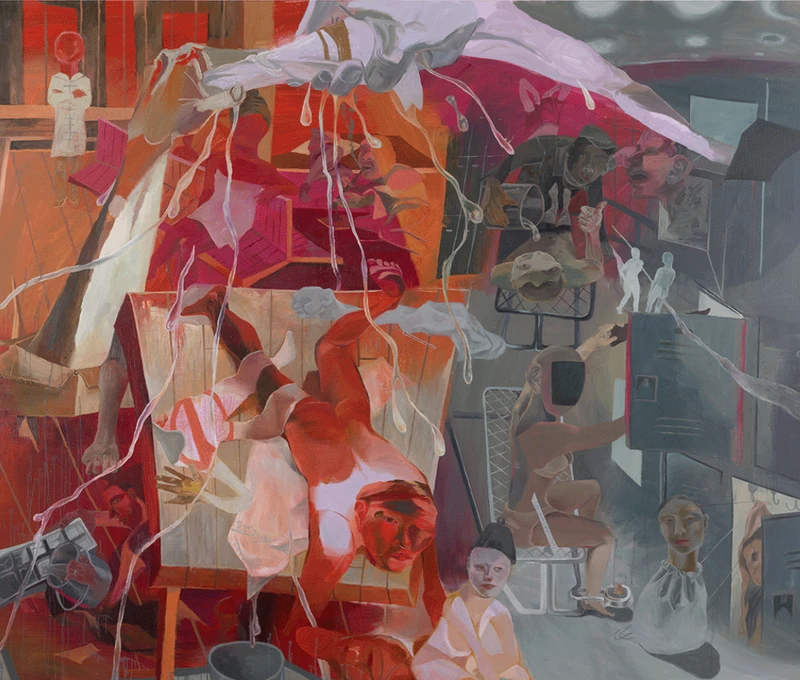Rachel Zhang
20 Nov-22 Dec 2024
PV 20 Nov 2024, 6-8pm


Through surrealist figurative scenes, Zhang explores the evolving beliefs that structure social hierarchies and manifestations of control. Known for her evocative oil paintings that explore the intersections of personal autonomy and authori-ty, Zhang’s work dives deep into the often absurd and unsettling dimensions of human interaction within institutional structures.
"I’m interested in the dualities of rigidity and instability, conformity and transgression, the individual and the crowd, tenderness and cruelty," says Zhang. “By working with imagined figures and narrative scenes, I reflect and make sense of these themes as they appear in modern-day spaces and actions, while also questioning the future of our societies.”
Zhang's work reflects her nuanced perspective on visibility, otherness, and the complexities of identity in relation to her cultural heritage and societal expectations. Everyday public spaces - gym changing rooms, dive bars and gas stations become sources for her absurdist characters to come alive. Remensi-cent of Jorg Immendorf’s Berlin paintings, Zhang’s creations often depict figures in conflict or meta-morphosis; men turn into bowling pins and commuters morph into cogs on wheels.
"My works are explorations of the absurdities and existential anxieties surrounding questions of personal autonomy and the social roles we occupy in relation to various systems of power," Zhang explains. “Through surrealist figurative scenes, I’m interested in reflecting on and metaphorizing the evolving beliefs that have structured societies and their social hierarchies, moralities, and manifesta-tions of control over our bodies.”
As a second-generation Chinese American, Zhang brings a unique perspective that enriches her inter-pretations of cultural and societal frameworks. Through surrealist figurative scenes, she examines not only the dynamics of control and autonomy but also the complex experiences of identity, visibility, and otherness. Her work resonates with her heritage, drawing inspiration from her family’s narratives from 20th-century China, broader Asian American histories, and the role of women across generations. Zhang’s art boldly navigates these subjects, setting her apart as a leading voice in contemporary genre painting.